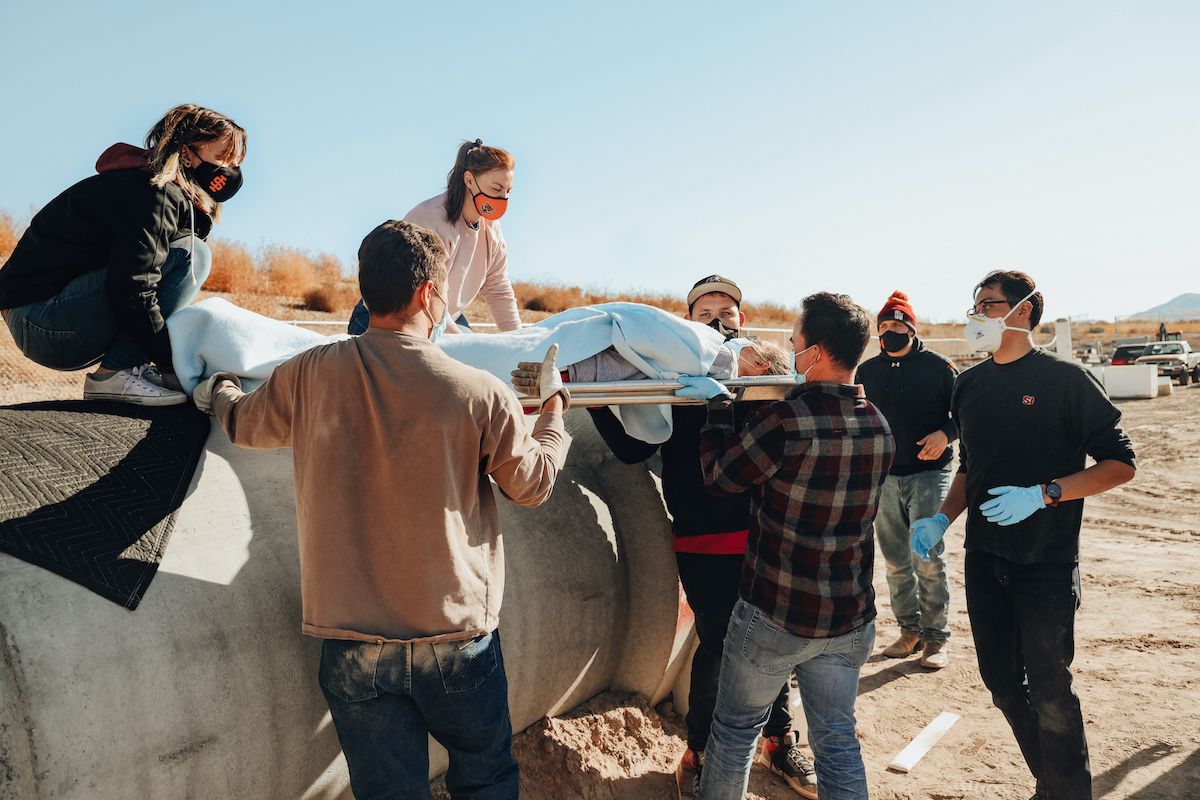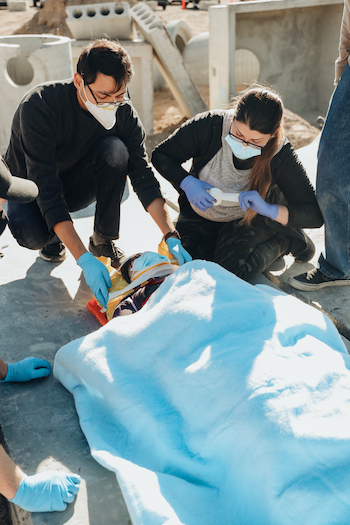Idaho State EMT program partners with the Disaster Response Complex for 'real-world' training
November 5, 2020

POCATELLO – Twenty students and six instructors in the Idaho State University College of Technology’s Emergency Medical Technician program received real-world emergency response training at the new ISU Disaster Response Complex, which is run by the Department of Civil and Environmental Engineering.
Training scenarios were constructed to simulate emergency situations. The simulated scenario training is a typical component of the EMT program, which is part of the College of Technology’s Continuing Education and Workforce Training programs. However, conducting the training at the Disaster Response Complex allowed for the development of new mass casualty and individual injury incidents of an industrial nature that were not possible before, including extractions from buildings that may have collapsed or dark tunnels that may have flooded.
 “We were thrilled to be able to conduct training at the new DRC facility,” said RaeLyn Price, health programs coordinator for Continuing Education and Workforce Training. “The training exercise on Saturday went as well as anyone could ever expect. Students and instructors all enjoyed the experience.”
“We were thrilled to be able to conduct training at the new DRC facility,” said RaeLyn Price, health programs coordinator for Continuing Education and Workforce Training. “The training exercise on Saturday went as well as anyone could ever expect. Students and instructors all enjoyed the experience.”
During the Halloween Day training, trainees worked together to assess the situation and then determine how to enter the scene to safely assist and treat injured individuals. Once rescued, trainees prepared the injured for transport to appropriate medical facilities. Each training scenario required the students to work as a team to safely rescue the mock victims.
To set the stage for the emergency scenarios, victims were dressed in full moulage, which involves creating realistic-looking mock injuries on volunteer ‘victims.’ Using moulage created a new element for the trainees since they hadn’t yet experienced anything as true to life while in the course. One challenge participants faced was getting past the realistic appearance of victims and using the skills they learned in the course to address the situation.
“It was awesome to watch the students seriously take on their roles and work together to provide appropriate treatments and rescue,” Price said. “We look forward to utilizing the DRC for more training opportunities in the future.”
The Idaho State Disaster Response Complex is a unique facility recently added to the university’s research portfolio. It was created with a nearly $1.1 million grant from the Higher Education Research Council of the Idaho State Board of Education through the Idaho Global Entrepreneurial Mission.
"The DRC is a unique facility in the Northwestern United States,” said Mustafa Mashal, associate professor in the Department of Civil and Environmental Engineering and Principal Investigator for the Disaster Response Complex project. “We have capabilities to simulate various scenarios for training emergency responders. There are numerous collaborators, faculty, and students working on the DRC project. The ultimate goal of the project is to save lives during an emergency scenario, through efficient and effective responses.”
The DRC has three focus areas: research, curriculum and certification, and training and exercise. The training and exercise focus area encourages local and regional emergency responders to use the DRC for real-world simulations of natural and man-made disasters. Search-and-rescue scenarios can be structured in several ways using precast concrete elements to create situations that require navigating training lanes such as collapsed structures, confined spaces, and vehicle rescue.
“From the perspective of an educational institution, the project benefits our students through a wide variety of learning and research processes,” Mashal said. “From a community perspective, this project benefits Idahoans and beyond by helping ensure the emergency responders have an exceptional facility to conduct training and exercise events."
The DRC outdoor facility is still under construction and more training lanes are planned to be added in the upcoming months. The EMT program is the first group to use the DRC’s outdoor facility.
“We welcome emergency responders from our community, region, and nation to use the DRC for their training and exercise events,” Mashal said. “The doors of the DRC are open for anyone who wants to explore collaboration with ISU on disaster response. The DRC is a long-term resource for our emergency responders and we are very glad to have this facility here in Pocatello.”
To learn more about the DRC, please visit https://www.isu.edu/cee/
Categories:
College of Science and EngineeringCollege of TechnologyEventsStudent LifeUniversity News
